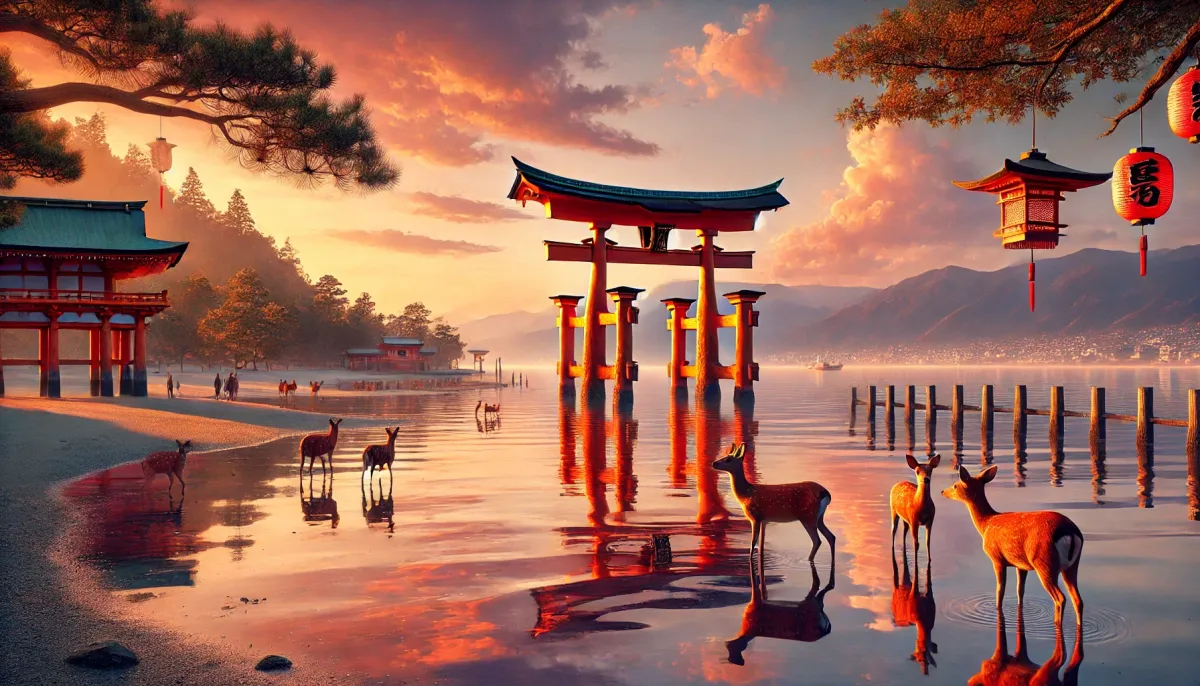Hey everyone, Mark here! As a seasoned traveler with a penchant for exploring Asia's vibrant cities and hidden gems, I'm thrilled to share my recent adventure through Japan. This trip wasn't just about ticking off famous landmarks; it was about immersing myself in the culture, connecting with the locals, and experiencing the breathtaking beauty of this incredible country. This article will focus on three remarkable locations: Miyajima's iconic floating torii gate, the spiritually significant Izumo Taisha Shrine, and the serene beauty of the Adachi Museum of Art. Get ready to be amazed!
Miyajima: Where the Torii Gate Meets the Sea
My journey began on Miyajima Island, famed for its stunning Itsukushima Shrine. I'd seen pictures of the o-torii (large torii gate) standing majestically in the sea, and the reality exceeded all expectations. The sight of this vibrant red gate seemingly floating on the water, with the tide gently lapping around its base, was truly awe-inspiring. It felt surreal, like stepping into a dream.
I remember my first visit; there were far fewer tour groups than there are today. Seeing the o-torii stand firm against the changing tides was a deeply moving experience, even for a young traveler like I was back then. Itsukushima Shrine, along with Mount Misen's primeval forests, is a UNESCO World Heritage site, and rightfully so. The entire shrine, painted a striking vermillion red, is breathtaking. The sheer scale, the intricate details, the way it seems to sit directly on the water – it’s an unforgettable sight.
The island itself is a delight, filled with friendly deer roaming freely (much tamer than the Nara deer, I must add!), and beautiful natural scenery. The atmosphere is utterly romantic, a feeling I can't quite put into words.
| Miyajima Highlights | Description |
|---|---|
| Itsukushima Shrine | UNESCO World Heritage site featuring the iconic floating torii gate. |
| Mount Misen | Hiking trails with stunning views of the island and the Seto Inland Sea. |
| Deer | Friendly deer roam freely throughout the island. |
| Shopping Street (Omotesando) | Bustling street with shops, restaurants, and local crafts. |
| Miyajima Aquarium | Explore the diverse marine life of the Seto Inland Sea. |
Izumo Taisha Shrine: A Journey into Japanese Mythology
Next, I traveled to Izumo Taisha Shrine in Shimane Prefecture, one of Japan's oldest and most important shrines. This shrine is renowned for its connection to enmusubi (marriage and relationships), attracting millions of visitors each year, especially women. However, people also come to pray for success in various aspects of life, including work and friendships.
October, known as Kamiarizuki (month when the gods gather), is a particularly significant time to visit. During this period, it's believed that 800 gods from across Japan gather at Izumo Taisha Shrine to conduct a council. This is the reason why October is called "Kaminazuki" (god-less month) in the rest of Japan.
The shrine's architecture is impressive; the massive shimenawa (sacred straw rope) is a spectacle to behold. Inside, I discovered numerous rabbit statues, a nod to the myth of Ōkuninushi-no-Mikoto and the white rabbit. This myth, in short, tells of how Ōkuninushi helped a wounded white rabbit, leading to a significant connection that is now associated with good fortune in relationships. It's a charming story that adds a unique layer to the shrine's allure.
| Izumo Taisha Shrine Details | Description |
|---|---|
| Main Features | Massive shimenawa, numerous rabbit statues, and the historic haiden (worship hall). |
| Mythological Significance | Connected to the myth of Ōkuninushi-no-Mikoto and the white rabbit, associated with good fortune in relationships. |
| Kamiarizuki (October) | A significant time to visit, when 800 gods are believed to gather at the shrine. |
| Unique Ritual | The unique four-clap ritual instead of the traditional two-clap. |
Adachi Museum of Art: A Masterpiece of Japanese Garden Design
My final destination was the Adachi Museum of Art in Shimane Prefecture. Consistently ranked as Japan's number one garden for 12 years, this museum is a testament to the beauty and serenity of Japanese garden design. The gardens are breathtaking, especially in autumn when the maple leaves turn vibrant shades of red and orange. The museum itself is beautifully curated, showcasing a collection of Japanese art and providing a tranquil space for reflection.
The museum's dedication to its garden is evident in every detail, from the carefully pruned trees to the meticulously arranged stones. The garden’s design is so well-executed, it really does feel like viewing a painting come to life. Each season reveals a different charm – the tranquility of winter, the vibrant hues of autumn, the fresh bloom of spring and the lush greenery of summer.
| Adachi Museum of Art Highlights | Description |
|---|---|
| Japanese Garden | Consistently ranked as Japan's number one garden. |
| Art Collection | Displays a wide range of Japanese art, complementing the garden's beauty. |
| Tranquil Atmosphere | Offers a peaceful and reflective environment. |
| Founder's Vision | Built on the vision of Zenji Adachi, reflecting his love for Japanese art and landscapes. |







